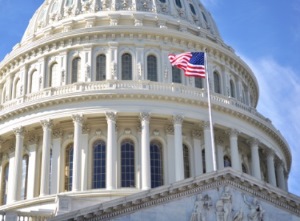Common knee surgery ineffective in study
One of the most common types of knee surgery performed in the U.S. is no more effective than fake surgery, at least for the first year, according to a new study.
One of the most common types of knee surgery performed in the U.S. is no more effective than fake surgery, at least for the first year, according to a new study.
Kurt DelBene, former president of the Microsoft Office Division, will replace Jeff Zients as the administration’s point person on HealthCare.gov, the Department of Health and Human Services announced Tuesday.
Q. My son is a United States citizen. He’s been working in South Korea for eight months, and is required to buy into their health care system. He plans to return to the States in August 2014. Is he required to enroll in health insurance here before he returns?

By Thomas Mangan
CEO, United Benefit Advisors
The Government Sector has always been much more generous with employee benefits, but in 2013, it appears public employers loosened their purse stings even further to compensate for recent pay freezes. Newly released results from the 2013 UBA Health Plan Survey show that while private sector employees are absorbing more costs for their own health care, facing high deductibles and huge out-of-pocket cost increases in recent years, public employees saw their employers pay three times more toward their benefits. Unfortunately, this means private employees were hit from both sides — as taxpayers, they picked up the tab by assuming a higher percentage of costs for employees in the public sector.
Findings also show that the private sector has controlled costs better than public employers by using plan designs that shift more up-front cost to employees, a strategy proven to decrease total cost.
In 2013, public employer cost per employee increased 22 percent from $7,001 in 2012 to $8,551 in 2013, while employer cost in the private sector increased only 15.8 percent from $5,226 in 2012 to $6,040 in 2013. The portion an employee pays decreased for both during that same time period, but by nearly 30 percent (or $1,025) for a public worker and only 15.7 percent for a private worker. Taxpayers, therefore, assumed an additional $1,681 or 24.28 percent of a public employee’s health care cost.
While much of the private sector has moved to consumer-driven health plans (CDHPs), which grew from 22.5 to 24.1 percent of all plan types offered across all industries and size groups, a majority of public plans are still considered “Cadillac plans,” rich in costly benefits that have been stripped from most private plans — putting the public sector at risk of facing the forthcoming “Cadillac Tax.”
Under the Patient Protection and Affordable Care Act (PPACA), plans that cost more than $10,200 for individuals and more than $27,500 for families will face a 40 percent tax on the amount over the threshold.
When the Cadillac Tax takes affect in 2018, almost all local and state governments will face huge penalties unless they get their costs under control. For example, the average municipality in Illinois and Massachusetts will pay $5,000 per employee in 2018. By 2020, the penalty for family coverage will skyrocket to $9,202 in Illinois and $19,699 in Massachusetts. Unfortunately, those penalties are passed to taxpayers facing their own health care cost increases.
Other notable differences between public and private health plan designs include:
Request a copy of the 2013 UBA Health Plan Survey online or contact a local UBA Partner for a customized benchmarking report.

The January Edition of UBA’s Employer Webinar Series will Take Place on Tuesday, January 14 at 2:00 p.m. ET/11:00 a.m. PT
 “Complaining is not a strategy.”– Jeff Bezos, Founder and Chief Executive Officer, Amazon.com
“Complaining is not a strategy.”– Jeff Bezos, Founder and Chief Executive Officer, Amazon.com
It’s no secret that the insurance benefits industry is rapidly changing, probably at the fastest rate in its history. United Benefit Advisor’s Chief Executive Officer, Thom Mangan, has been outspoken about the fact that advisors who don’t keep up with the changing benefits industry will quickly get left behind. Mangan is often recognized for his drive to stay one step ahead of the game and was recently honored with the CEO Leadership Award from the Institute of HealthCare Consumerism (IHCC) as a result of his leadership in this area. In this brief interview with the IHCC, he shares his thoughts on the future.
IHCC: In your view, how is the world of the health benefits advisor changing?
Mangan: Clients are no longer looking for a transactional insurance agent but a consultative advisor. The advisor must have tools and resources such as claims analytics, benchmarking data, national footprint and compliance resources in order to stay in business.
IHCC: What are you hearing are the biggest obstacles for benefits advisors going forward?
Mangan: Access to resources needed to remain relevant.
IHCC: Where are the greatest opportunities for advisors going forward?
Mangan: Those who invest in their business will succeed beyond the level they are today while those 90 percent who do not will die a quick death. An advisor can no longer be a generalist in insurance, but must have a “Ph. D.” to drive to the next level.
IHCC: What opportunities can a smaller benefits advisor firm — one that may be a UBA Partner — provide for an organization over a larger, multinational firm?
Mangan: Health insurance is a local choice dealing with local business. UBA Partner Firms have real people in more than 250 communities across the nation who can make changes at the speed of a PT boat versus a national advisor who moves at the speed of an aircraft carrier.
IHCC: What trends in health care and employee benefits are you currently most “bullish” about?
Mangan: The more complex the federal government makes health insurance, the more valuable a modern advisor becomes to their clients.
IHCC: How has the Patient Protection and Affordable Care Act (PPACA) impacted the benefits advisor field? How has UBA helped advisors in this area?
Mangan: Clients have been looking to their advisor to provide guidance regarding PPACA. Unlike most advisors who just forward carrier information or articles, UBA has a group of nine ERISA attorneys who generate relevant information quickly for the 40,000 employers that are clients of UBA Partner Firms.
IHCC: In your view, what are some of the most interesting or relevant points from this year’s Health Plan Survey?
Mangan: 2013 is the calm before the storm. While the past two years have shown renewals of 4 percent and 5 percent respectively, 2014 is a headwind that will turn out to be a hurricane. Where the Northeast annual cost per employee per month is $10,808 those in the Southeast are $7,846. Most of this pricing is based around plan design. In 2014, PPACA will force employers to offer much richer health plans in the rest of the country which will raise the rates for the lower cost areas anywhere from 20 percent to 60 percent.
IHCC: How would you describe your overall vision for UBA going forward?
Mangan: Having been a part of this industry for more than two decades, this, to me, is one of the most exciting times in history, with great opportunities ahead. For example, UBA just launched two new private health insurance exchanges – Benefits Passport® and benefitbay™ – which are part of UBA’s continued innovation. There is much more to come and the excellent people who make up UBA are leading the way. I’m honored to be a part of this organization.

 There are many private exchanges cropping up and we’ve written before about the risks in this area. However, there is also a tremendous upside when it comes to financial control, budgetary certainty, cost reduction, risk avoidance, employee choice and administrative overhead. So what should you look for in a private exchange? Consider these areas:
There are many private exchanges cropping up and we’ve written before about the risks in this area. However, there is also a tremendous upside when it comes to financial control, budgetary certainty, cost reduction, risk avoidance, employee choice and administrative overhead. So what should you look for in a private exchange? Consider these areas:
Proven technology. If we’ve learned anything about healthcare.gov, we know an established, proven platform already in use with customers is crucial. Furthermore, make sure it is mobile-friendly!
Multiple funding models. Make sure the platform can accommodate all of the funding options and plan types that you need — fully insured, self-funded, health savings accounts (HSAs), flexible spending accounts (FSAs), etc.
Plan choices. How many medical, dental and vision plans are on the platform and how closely do they match your typical offerings? Can they accommodate your carriers? Do they offer ancillary benefits? Do the carriers bear the full load of compliance?
Decision-making support. How effective are the online and call center support services at enrollment? What alternatives do they offer for those unable to use the website? Is the call center US-based or offshore?
Employee advocacy services. Enrollment support is key, but then what? You need a platform that can handle new hires, terminations, status changes and ongoing claims support capable of understanding the intricacies of your plans.
Defined contribution modeling tools. For many, converting to a defined contribution model is complex. Ask to see what options and tools they have to help you make the best decisions.
Benefits accounting services. Having an enrollment platform is one thing. Reliably transferring data to carriers and payroll platforms is another.
Lastly, it’s a good idea to consider the advice of a benefits advisor to understand the different private exchange options and to determine which might best suit your employees’ needs. In addition to providing this advice, an advisor can also make the signing-up process easier for individual employees.

 Many large, traditionally-insured employers are watching companies like IBM, Walgreens, TimeWarner, Sears, Aramark, Ingram Micro and Trader Joes move to private exchanges. And like most employers, they are asking themselves:
Many large, traditionally-insured employers are watching companies like IBM, Walgreens, TimeWarner, Sears, Aramark, Ingram Micro and Trader Joes move to private exchanges. And like most employers, they are asking themselves:
Assuming they have made the decision to continue offering group insurance, employers are now starting to compare traditional coverage with the private exchange model. Here are the basics:
| Traditional Large Employer Coverage | Private Exchanges | |
| Plan Type | Group | Typically Group |
| Funding | Typically “Defined Benefit” (self funded) | “Defined Contribution” (fully insured) or self-funded |
| Plan Choices | Typically 2-3 | 4+ |
| Actuarial Value | Average 80+ percent, with few if any low-cost plans | Typically broader – 60-90 percent |
| Carriers | One or more | Varies per exchange |
| Customization | High, as requested by employer | Little to none |
| Consistency | High nationwide | High, impacted by state mandates |
| Tax Treatment | Deductible by employer | Deductible by employer |
| Member Support | Varies by employer | Generally high |

Like the classic child question, “Why?” and the time-tested parent response, “Because!” there are some things in benefits that we as HR professionals just need to know even if they are not that remarkable. It’s just good for us. Like eating vegetables….
Most small employers won’t be able to buy plans online until November 2014.